Create a Variable Offset Surface
You can create a variable offset surface by offsetting an existing surface.
Click Variable Offset
 . .
The Variable Offset Definition dialog box appears.
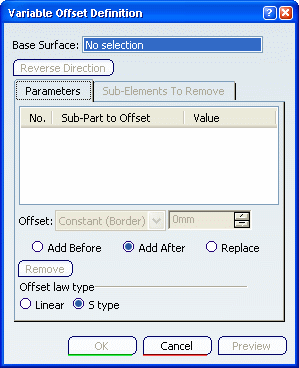
Select the Base Surface to be offset. Select each sub-part to be offset (whether wires or
surfaces) and define its offset type from the Offset drop-down list:
-
Variable: applies a variable
offset to the sub-part. The offset value field is unavailable.
-
Constant:
applies a constant
offset to the sub-part. Specify the offset value.
In our example, we defined a constant offset value of 40mm for
Surface.1, a variable offset value for Surface.2 and a constant offset
value of 20mm for Surface.3.

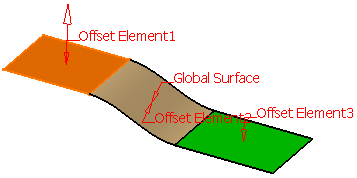
You can use the following options:
-
Replace: to replace the selected surface by another surface,
-
Add
Before : to add a surface before the selected surface,
-
Add
After : to add a surface after the selected surface,
-
Remove :
to remove the selected surface.
Select the offset law type between
Linear and S type (default mode, extremities are
tangent continuous).
Click Preview.
The offset surface is displayed normal to the reference surface.
Click OK.
One single feature is created: an automatic join of the resulting
areas is performed if the result quality allows it (G1 connections).
The surface (identified as Variable Offset.xxx) is added to the
specification tree.
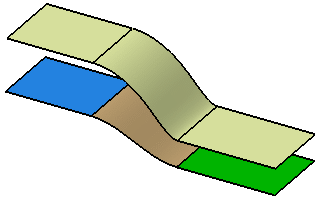

Remove Sub-Elements
The Sub-Elements to remove tab helps you for the
analysis in case the offset encounters a problem.
Click Variable Offset
 . .
The Variable Offset Definition dialog box appears.
Select the Global Surface to be offset. Select each sub-element to be offset (whether wires or
surfaces) and define its offset type:

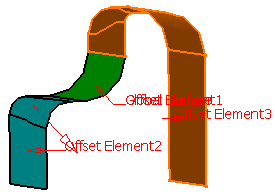
Click Preview.
A Warning message appears and informs you that some
sub-elements are erroneous. The geometry shows these
sub-elements and flag notes display the sub-elements to remove.
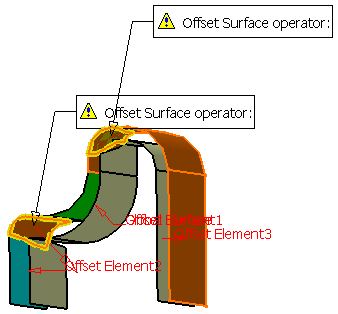
Click Yes to accept the offset.
In the Variable Offset Surface Definition dialog box,
the Sub-Elements to remove tab lists the erroneous sub-elements and a
preview of the offset is displayed.
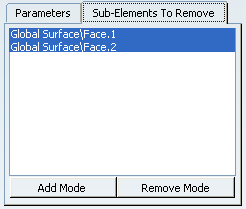
The following modes are optional, you may use them if
you need to add or remove a sub-element to create the variable
offset.
- Add Mode:
- when you click an unlisted element in the geometry, it is
added to the list
- when you click a listed element, it remains in the list
- Remove Mode:
- when you click an unlisted element in the geometry, the
list is unchanged
- when you click a listed element, it is removed from the list
Click Preview.
The offset surface is displayed normal to the reference surface.
Click OK to create the surface.
The surface (identified as Variable Offset.xxx) is added to the
specification tree.
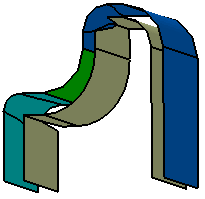

Create a Constant Offset Surface
You can create an offset surface whose sub-elements have several
constant values. The offset surfaces are automatically extrapolated or
split so that they connect together.
Click Variable Offset
 . .
The Variable Offset Definition dialog box appears.
Select the Global Surface. Select each sub-element to be offset and apply a
different constant offset value to each of them as shown in the picture
below:

Click OK to create the surface.
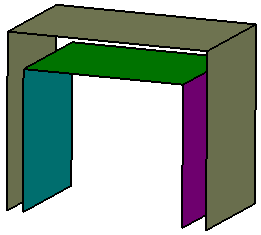
|